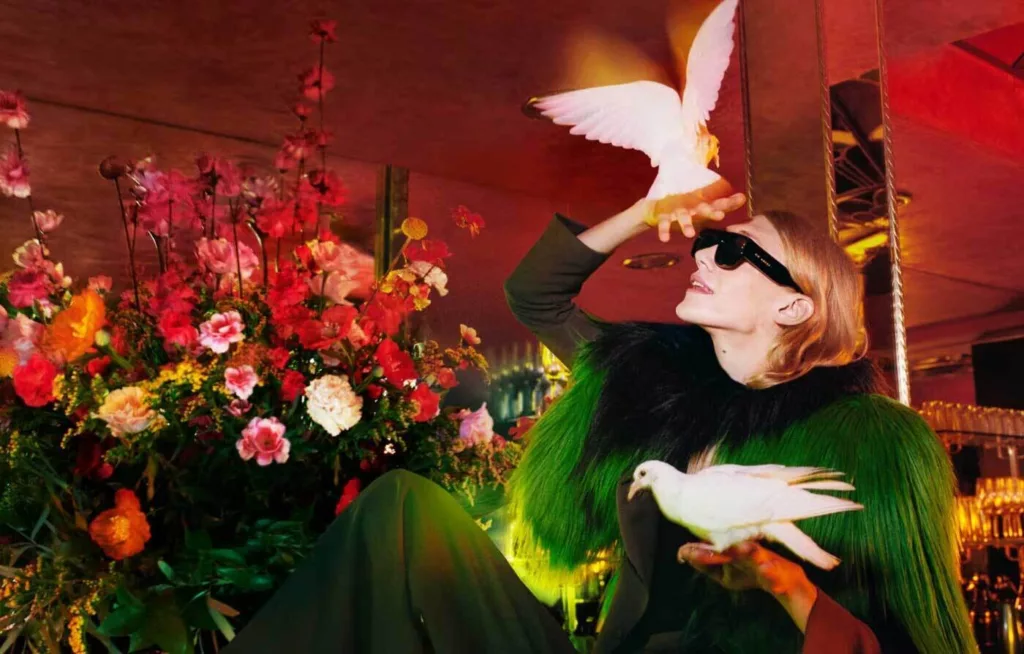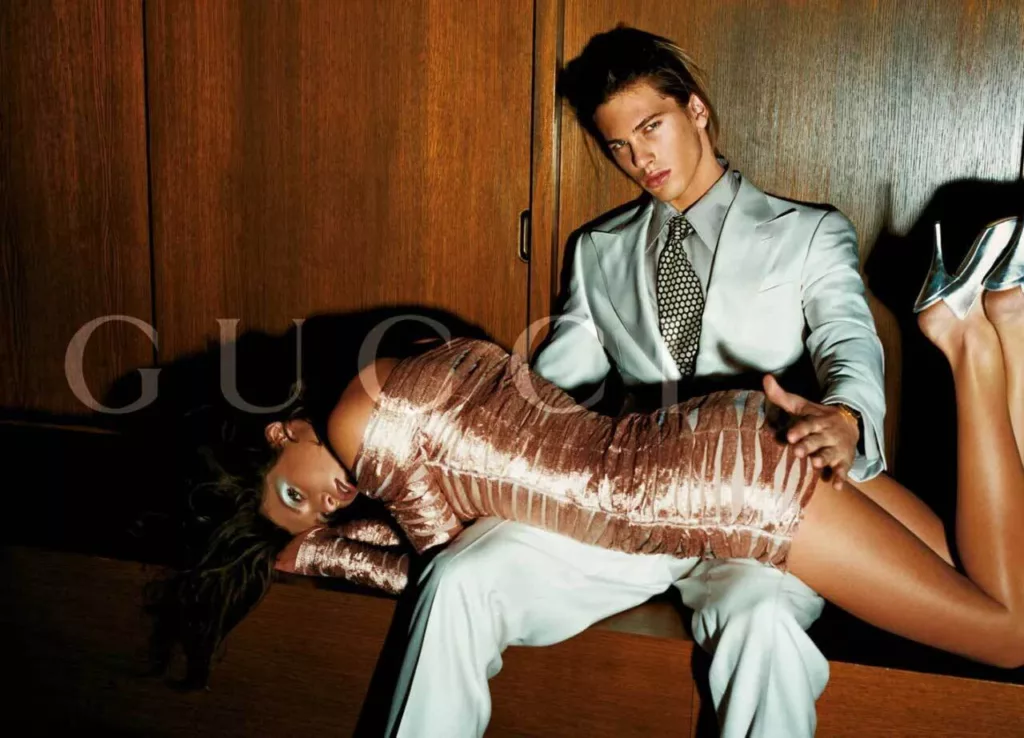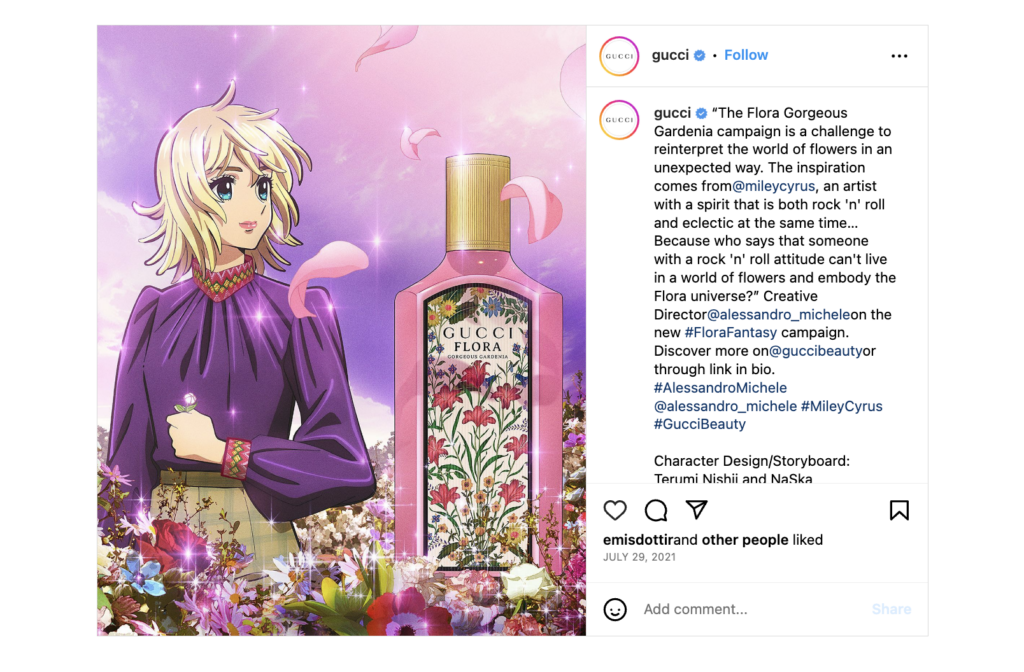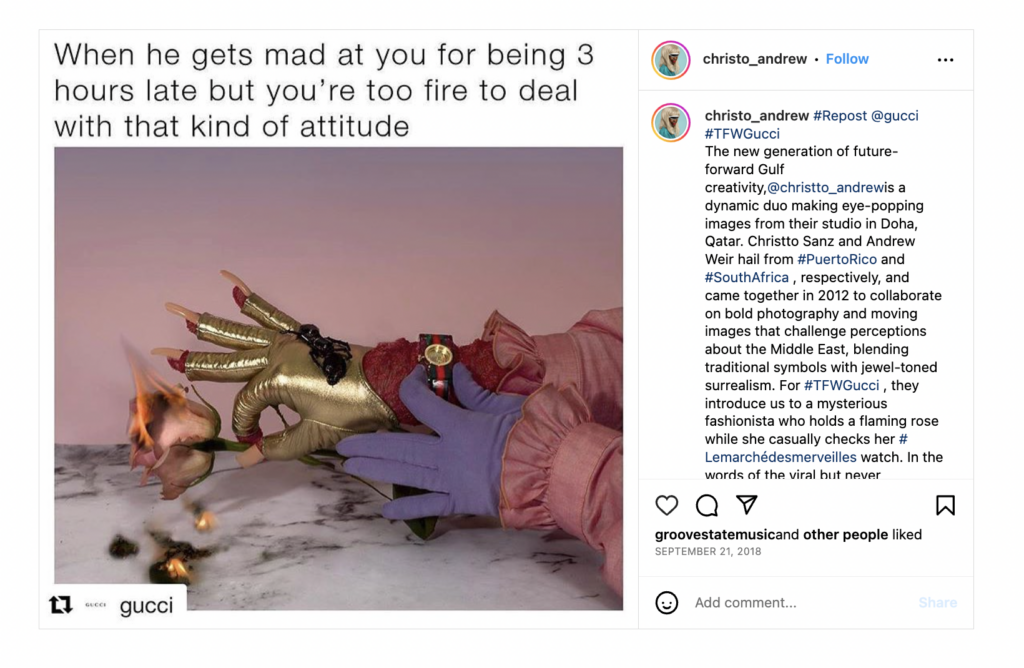
Gucci’s Marketing Strategies and Examples Through Years
Since it’s humble beginnings as a leather goods importer in 1921 by Guccio Gucci, the Italian brand went on to conquer the luxury fashion industry thanks to some progressive, or even disruptive marketing strategies. Among countless other fashion houses that claim exclusivity and sophistication, Gucci’s marketing strategy takes all that and goes against the grain to put the brand’s uniqueness forward. It’s secret to success is, doing what many luxury marketing agencies would advise the brand not to. From capitalizing on icons of the age to sailing on progressive currents, let’s see what Gucci got right.

Gucci’s Marketing & Advertising Strategies and Examples
Initially, the Gucci brand’s marketing strategy was to rely on word-of-mouth to promote its high-quality, hand-made leather goods. In the 1950’s, the brand expanded its product range to include ready to wear clothing and accessories around the time it also started to employ celebrities and actresses to promote the luxury lifestyle of Gucci.
The Jackie Bag and Grace Kelly’s “Flora”
Gucci’s international marketing strategy focused on celebrity endorsements from early on. Documented by numerous paparazzi photographs, Jackie Kennedy’s fondness of the Gucci bag “Fifties Constance” resulted in an organic global marketing opportunity for the brand to capitalize on. The old name was forgotten, it was now called the Jackie Bag. Gucci’s efforts to broaden their target markets to include the US gathered momentum through magazine ads with glamorous models and actresses fashioning the Jackie Bag.
As much as the Jackie Bag represented its namesake’s refined and luxurious style, Gucci’s global marketing strategy matched another American sweetheart with a unique product. When Grace Kelly, or Princess Grace of Monaco at the time, visited the luxury fashion brand’s flagship store in Milan, Rodolfo Gucci wished to present her with a gift befitting her elegant and restrained femininity.
So, the “Flora” print containing 43 varieties flowers, plants and insects was born to encapsulate the Princess’s elegance. The print endured and became a staple in the future collections of the fashion house.
Gucci’s marketing strategy was realistically one of the first to leverage celebrity endorsement to expand their reach to a global target audience. Prestigious reputations of icons like Jackie Kennedy and Grace Kelly meshed well with the brand’s identity and their customer base.
Renowned celebrities marketed the Gucci spirit of elegance, but now the brand needed a recognizable signature. Creation of the now-iconic double-G logo around the same time encapsulated the brand’s image in the print ads, but most prominently the symbol of luxury and status was featured in the GG canvas, a fabric patterned with the brand’s logo used in many of Gucci’s products.
The Tom Ford Era that Shook the Fashion Industry
Throughout the 60s and 70s, Gucci’s marketing strategy of celebrity endorsements and promotion of a luxurious lifestyle propelled the brand into distinguishing itself among the luxury brands in the world. In the 1980s, Gucci enjoyed a period of high revenue but in later years the brand fell out of vogue. The fashion house then hired Tom Ford as Creative Director to break out of this slump. Under his vision, Gucci’s marketing strategy took a truly daring turn.

In addition to expanding the product range to include fragrance and eyewear, the new designer intended to make what was seen as old school luxury, sexy. From then on, Gucci’s marketing material purposefully disrupted the social norms with provocative imagery. In defiance to the traditional, restrained beauty luxury brands wrapped themselves in, Gucci was not afraid of playing into customers’ more primal desires. So, Tom Ford’s creative vision took ‘sex sells’ to a whole other level. The modernized Gucci clothing items were promoted with models in sexually suggestive poses. Tom Ford intentionally raised controversy and promoted the brand’s transformation through shock value. It was a gamble well played. Gucci solidified its image as cutting-edge in the saturated fashion industry through 1990s and 2000s.
Familiar Faces, Familiar Patterns
After celebrating the 40th anniversary of the Flora print with a revival, Gucci leaned into its tried and true marketing strategy of matching beloved faces and classical products in promoting the Flora fragrance with Miley Cyrus. The campaign was announced via a colorful video on the official Instagram page which the brand’s designer says was inspired by the singer’s funky spirit and the anime world.

Especially adept at sniffing out stars, Gucci paired up with Dakota Johnson to promote the Jackie 1961 in an homage to the classic. Undergoing a bohemian, inclusive, and gender-neutral revival, the brand brought in Harry Styles, among others, to do a talk show called “The Beloved Show” with James Corden. The fashion house is not just in it for a famous face, rather they are set on teaming up with the right celebrity that reflects the brand’s message and identity appropriately.
Meme Marketing and a Progressive Spirit
How Gucci reaches its target audience on Instagram and other social media is another thing the brand goes against conventional logic. While other luxury brands prefer to keep a distance from fans, Gucci’s social media marketing strategy embraces the current culture, even going as far as using memes to promote its watches. The campaign “That Feeling When Gucci” uses the brand name as an adjective meaning luxurious and engages with younger fans via the quirkiness of the internet age.

The unconventional luxury brand is not afraid of taking risks if it means reaching a wider audience and putting its own name forward. Many other luxury brands embrace an almost unreachable image, but Gucci is a maverick. The brand simply sets its own rules. Strategy of Gucci has always been to stand out. The fashion house is not interested in being unreachable, it is busy being irreplaceable.






















